UPS stands for Uninterruptible Power Supply. It is an energy conversion system that provides continuous AC power to critical equipment during utility power interruptions by utilizing backup sources such as batteries. While UPS units are often referred to as power supplies, their core function is to enable seamless switching between two power sources to ensure uninterrupted operation of connected loads.
What is an Online UPS?
An online UPS, also known as a double-conversion UPS or true UPS, offers the highest level of power protection. In this system, incoming AC power is first rectified into DC power, which charges the battery and simultaneously feeds the inverter. The inverter then converts the DC back into clean, stable AC power for the load.
Because power to the load always flows through the inverter, the output is free from utility power fluctuations, noise, or transient disturbances. Online UPS systems typically include features such as automatic voltage regulation and frequency control. However, they come with trade-offs: higher cost, lower efficiency, and a more complex structure. As a result, they are mainly used in applications that require high-quality, uninterrupted power supply.
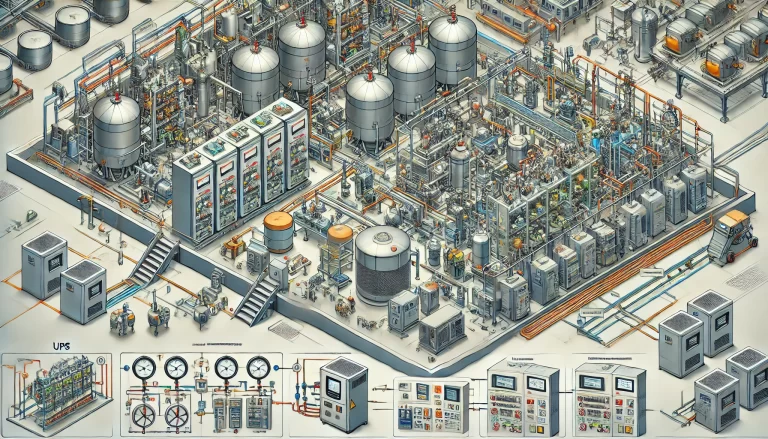
Four Operating Modes of Online UPS Systems
To understand how an online UPS functions under different conditions, we break it down into four primary operating modes:
➤ 1. Normal Operation Mode
Condition: Utility power is present and stable.
Working Principle:
The rectifier converts incoming AC power into DC.
This DC power simultaneously charges the battery and feeds the inverter.
The inverter converts DC back into AC and supplies clean, regulated power to the load.
Power disturbances such as voltage fluctuations, harmonics, and spikes are filtered out during this process.
📌 This is the default mode during stable power supply conditions.
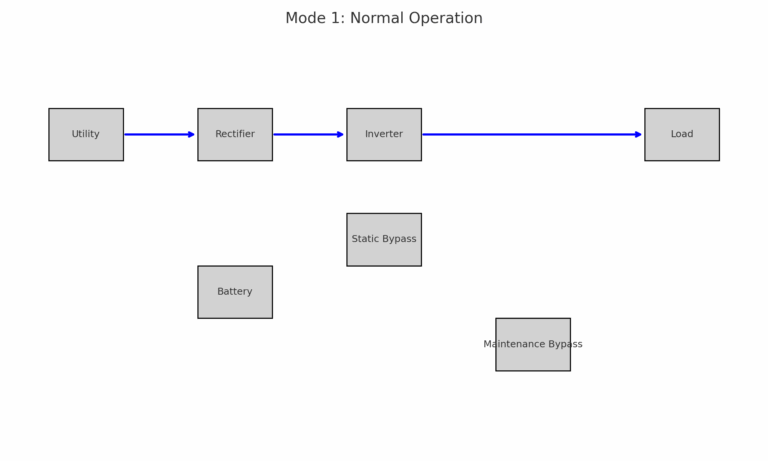
➤ 2. Battery Backup Mode
Condition: Utility power fails or the rectifier malfunctions.
Working Principle:
The battery instantly takes over and supplies DC power to the inverter.
The inverter continues to convert DC to AC, ensuring uninterrupted power delivery to the load.
📌 This mode guarantees zero-interruption operation during blackouts or grid failures.
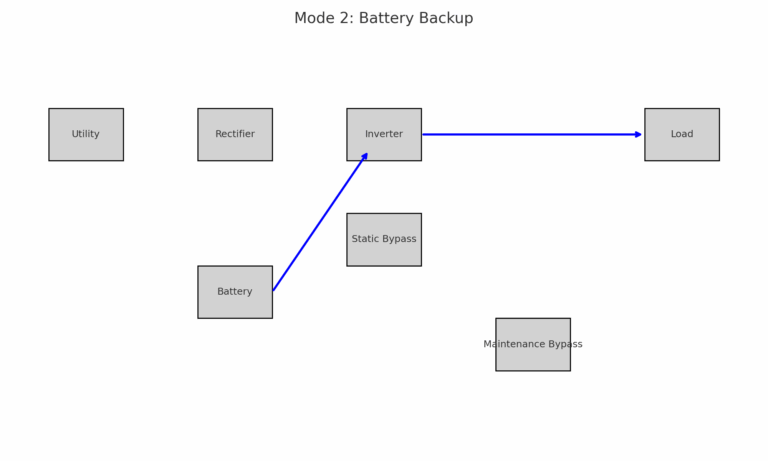
➤ 3. Bypass Mode (Static Bypass)
Condition: The inverter fails or is intentionally turned off (e.g., due to overtemperature, internal short circuit).
Working Principle:
The inverter disconnects to prevent further damage.
If the bypass source (utility AC input) is healthy, the static switch transfers the load to the bypass line.
📌 This provides temporary backup while bypassing the faulty inverter.
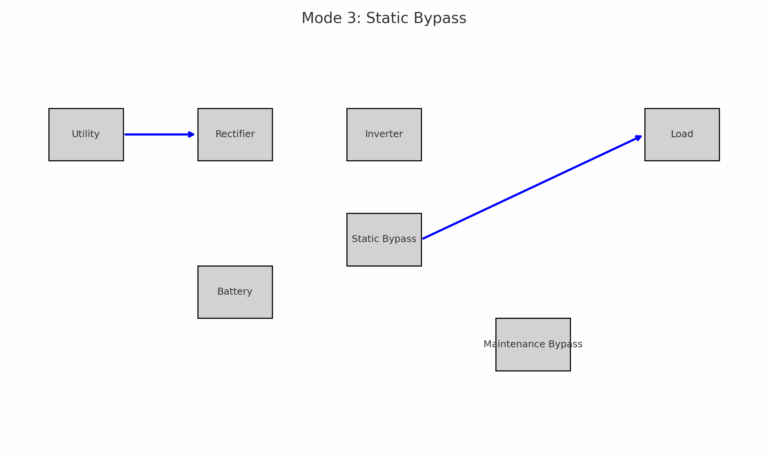
➤ 4. Maintenance Bypass Mode
Condition: UPS maintenance or battery replacement is required, but power to the load cannot be interrupted.
Working Principle:
The inverter is turned off, and the maintenance bypass switch is activated.
Power from the utility source flows directly through the maintenance bypass line to the load.
The UPS internal components (rectifier, battery, inverter) can now be safely serviced without affecting the load.
📌 This mode ensures safety during UPS maintenance without interrupting critical operations.
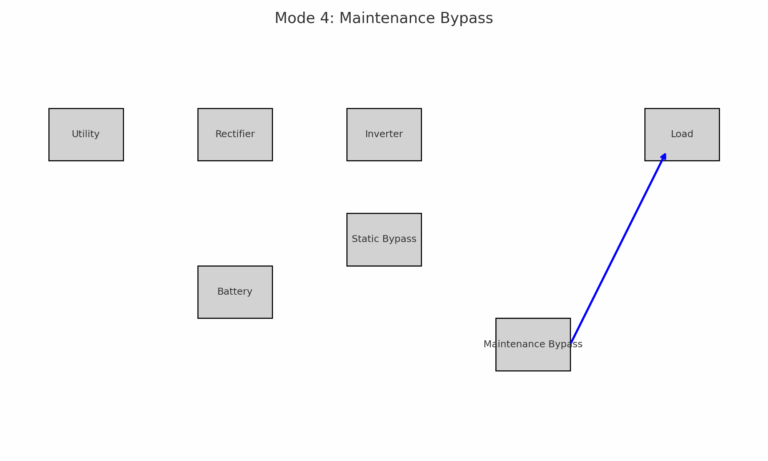
Summary
Online UPS systems provide superior protection for critical infrastructure by isolating the load from input power disturbances and maintaining continuous operation through various modes. Understanding the four primary operation modes—Normal, Battery, Bypass, and Maintenance—is essential for optimal deployment and troubleshooting of UPS systems.
If needed, we can provide simplified system diagrams for each mode to support training or client communication.
